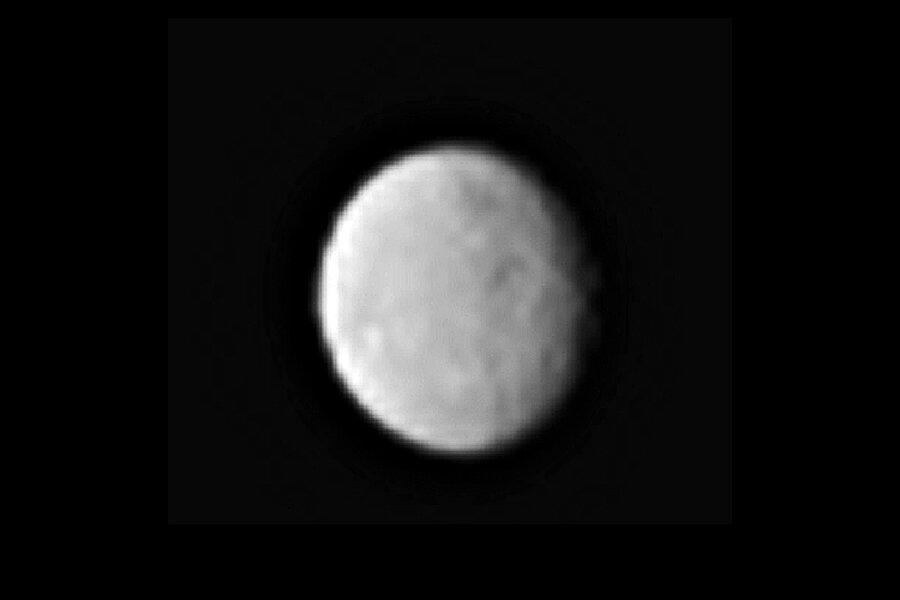NASA's Dawn makes final approach to Ceres: first close-up look at dwarf planet
Loading...
The 590-mile-wide ball of ice and rock dubbed Ceres is looking better and better as NASA's Dawn spacecraft makes its final approach to the dwarf planet.
NASA has just released the latest images of the one-time asteroid, now dwarf planet, taken Jan. 13. The flip-book collection shows a rotating ball not quite in focus, but with enough detail to tantalize mission scientists.
These images are providing the first hints from the craft's instruments of a varied Ceres-scape, including hints of craters, according to Andreas Nathues, a researcher at the Max Planck Institute for Solar System Research in Gottingen, Germany. He heads a team working with a camera on the craft that does double duty: The team uses its images for navigation as well as to map the distribution of minerals across Ceres's surface.
Ceres, the first of two dwarf planets NASA missions will visit this year, is the second of two main asteroid belt objects on Dawn's itinerary. Between July 2011 and September 2012, Dawn orbited Vesta, the second most massive object after Ceres in the asteroid belt, which falls between Mars and Jupiter.
Spanning an average of 326 miles, Vesta proved to be a budding planet with a case of arrested development, showing evidence of fracturing and faulting, signs that the object had developed a core, mantle, and crust. Gravity measurements backed up that notion of layering and revealed that Vesta had an iron core. The proto-planet endured two monstrous collisions, most recently about a billion years ago, that left overlapping impact basins at Vesta's south pole and left wrinkles in the crust elsewhere. For mountaineering fans, the proto-planet's south pole region also hosts a mountain three times the height of Mt. Everest.
Where Vesta is all rock and iron with distinct layers, Ceres is thought to have an undifferentiated rocky core encased in a thick mantle of water ice and topped with thin dusty shell. The mantle hosts more fresh water than does Earth.
Last January, researchers with the European Space Agency reported that water vapor was erupting from Ceres's surface in two locations – the first time water had been detected in the asteroid belt, the team said. The scientists made their observations using ESA's Herschel Space Observatory.
The vapor plumes rose from two relatively dark patches on the surface, locations that would have been somewhat warmer than surrounding areas. The team posited that these regions grew warm enough to trigger ices at the surface to sublimate, transforming instantly to a gas, rather than forming a liquid first. Others have suggested that the vapor comes from geysers or ice volcanoes – activity seen repeatedly on Saturn's icy moon Enceladus. That could imply regions where liquid or slushy water exists below the crust.
Given their radically different compositions and structures, Vesta and Ceres are the asteroid belt's Oscar Madison and Felix Unger. They are so different and yet occupy relatively close orbits inside what astronomers call the solar system's snow line – a distance from the sun beyond which water vapor and other gases condense into ice grains.
Ceres's presence inside this line strongly suggests that Ceres formed much farther out, researchers say. It settled into the asteroid belt during a period when the giant outer planets – initially closer together than they are today – began to migrate to their current orbits.
Dawn, scheduled to arrive at Ceres March 6, is expected to provide crucial insights into the processes at play on the solar system's innermost dwarf planet.








